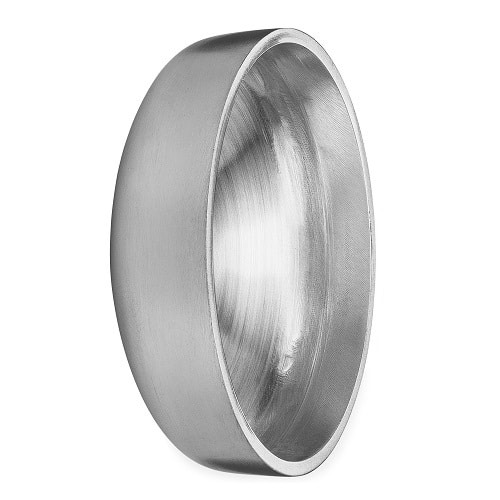-
Cangzhou Yulong Steel Co., Ltd.
-
Phone:
+86 13303177267 -
Email:
admin@ylsteelfittings.com
- English
- Arabic
- Italian
- Spanish
- Portuguese
- German
- kazakh
- Persian
- Greek
- French
- Russian
- Polish
- Thai
- Indonesian
- Vietnamese
- Zulu
- Korean
- Uzbek
- Hindi
- Serbian
- Malay
- Ukrainian
- Gujarati
- Haitian Creole
- hausa
- hawaiian
- Hebrew
- Miao
- Hungarian
- Icelandic
- igbo
- irish
- Japanese
- Javanese
- Kannada
- Khmer
- Rwandese
- Afrikaans
- Albanian
- Amharic
- Armenian
- Azerbaijani
- Basque
- Belarusian
- Bengali
- Bosnian
- Bulgarian
- Catalan
- Cebuano
- China
- China (Taiwan)
- Corsican
- Croatian
- Czech
- Danish
- Esperanto
- Estonian
- Finnish
- Frisian
- Galician
- Georgian
- Kurdish
- Kyrgyz
- Lao
- Latin
- Latvian
- Lithuanian
- Luxembourgish
- Macedonian
- Malgashi
- Malayalam
- Maltese
- Maori
- Marathi
- Mongolian
- Myanmar
- Nepali
- Norwegian
- Norwegian
- Occitan
- Pashto
- Dutch
- Punjabi
- Romanian
- Samoan
- Scottish Gaelic
- Sesotho
- Shona
- Sindhi
- Sinhala
- Slovak
- Slovenian
- Somali
- Sundanese
- Swahili
- Swedish
- Tagalog
- Tajik
- Tamil
- Tatar
- Telugu
- Turkish
- Turkmen
- Urdu
- Uighur
- Welsh
- Bantu
- Yiddish
- Yoruba

Nov . 09, 2024 21:32 Back to list
Exploring 90-Degree and 45-Degree Elbow Designs for Optimal Flow Efficiency
Understanding 90-Degree and 45-Degree Elbows in Piping Systems
In the world of piping systems, elbows play a crucial role in directing the flow of liquids and gases through various angles. The two most common types of elbows used are the 90-degree elbow and the 45-degree elbow. Each type has its specific applications, advantages, and considerations that make them uniquely suited for different projects in various industries.
The Function of Elbows
Piping systems consist of a network of pipes designed to transport fluids from one location to another. However, in most applications, a straight path is seldom possible due to structural constraints, safety regulations, or design requirements. Elbows are fittings that allow for changes in direction within the piping system. By facilitating turns, elbows help optimize flow patterns, reduce turbulence, and ensure efficient transport of the medium.
90-Degree Elbows
The 90-degree elbow is perhaps the most widely recognized and utilized elbow in piping systems. As the name implies, this fitting allows for a change in direction of exactly 90 degrees. Its design is essential in creating corners and sharp turns in piping layouts.
Applications 90-degree elbows are commonly used in various applications, including residential plumbing, industrial piping systems, and HVAC (Heating, Ventilation, and Air Conditioning) installations. They are often employed when it is necessary to redirect the flow of water, gas, or other materials efficiently within a confined space.
Advantages One of the primary advantages of using 90-degree elbows is their ability to maintain a relatively high flow velocity, minimizing pressure drops across the fitting. Additionally, they are fairly straightforward to install and can be made from a variety of materials, including PVC, copper, steel, and more, depending on the specific needs of the system.
90 degree and 45 degree elbow

Considerations While 90-degree elbows are versatile, they can create more turbulence than other degrees of elbow fittings due to the abrupt change in flow direction, which may lead to increased wear in certain applications. Therefore, it's vital to consider the specific flow characteristics and requirements of the system when using 90-degree elbows.
45-Degree Elbows
On the other hand, the 45-degree elbow offers a more gradual change in direction. This fitting is less common than the 90-degree elbow but is invaluable in scenarios where smoother transitions are required.
Applications The 45-degree elbow is predominantly used in situations where minimizing turbulence and maintaining pressure within the piping system is crucial. This makes it particularly suitable for high-velocity applications, complex systems, or projects where space constraints demand a less abrupt turn.
Advantages The primary advantage of the 45-degree elbow is its design, which allows for a smoother transition that reduces friction loss and minimizes the risk of cavitation. This can lead to improved efficiency in fluid transport. Additionally, they can be easily integrated into larger piping systems, offering flexibility in design.
Considerations While 45-degree elbows can enhance the performance of a piping system, they require more space in comparison to their 90-degree counterparts due to the longer sweeping curve. This can be a limiting factor in tightly packed or compact installations.
Conclusion
In summary, both 90-degree and 45-degree elbows are essential components of piping systems, each offering unique benefits depending on the specific requirements of a project. Understanding the differences between these two types of elbows is critical for engineers, designers, and installers to ensure optimal system performance. Whether it’s the traditional 90-degree elbow for sharp changes in direction or the more fluid 45-degree elbow for smoother transitions, selecting the right fitting can make a significant difference in the efficiency, longevity, and effectiveness of piping systems. Properly assessing the needs and constraints of the system ensures that the right choices are made, ultimately leading to successful fluid transport solutions. As technology and materials continue to advance, the future of piping fittings will undoubtedly evolve, paving the way for even more innovative solutions in the industry.
Latest news
-
ANSI 150P SS304 SO FLANGE
NewsFeb.14,2025
-
ASTM A333GR6 STEEL PIPE
NewsJan.20,2025
-
ANSI B16.5 WELDING NECK FLANGE
NewsJan.15,2026
-
ANSI B16.5 SLIP-ON FLANGE
NewsApr.19,2024
-
SABS 1123 FLANGE
NewsJan.15,2025
-
DIN86044 PLATE FLANGE
NewsApr.19,2024
-
DIN2527 BLIND FLANGE
NewsApr.12,2024
-
JIS B2311 Butt-Welding Fittings LR/SR 45°/90° /180°Seamless/Weld
NewsApr.23,2024











